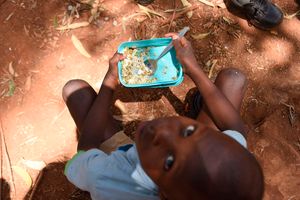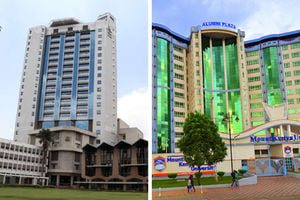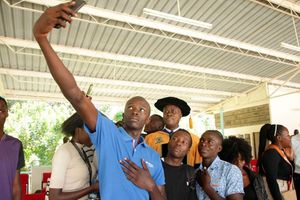
Students walk outside the Moi University administration block in Kesses, Uasin Gishu County on February 8, 2024.
Students who will begin their third, fourth, fifth and sixth years of studies in September in four universities are at risk of dropping out after the National Treasury failed to allocate any funds for their studies.
The 2024-2025 Budget Policy Statement had allocated the University of Nairobi Sh1.725 billion, Moi University Sh1.3 billion, University of Eldoret Sh702.7 million and University of Kabianga Sh339.6 million.
However, when the budget estimates were published, the four universities had zero allocation for their thousands of students.
The government has also not allocated any funds for research, feasibility studies, project preparation and design although the BPS had allocated Sh7.9 million.
The estimates are also silent on the financing of students in private universities who are sponsored by the government.
Additionally, the Higher Education Loans Board (Helb) has a financing deficit of Sh11.4 billion in the 2024-2025 estimates.
With the deficit, Helb can fund all continuing students and only 17.2 per cent of the students who will be joining university in September.
The proposed allocation for tuition loans and upkeep for the freshmen who will join university in September is Sh2.4 billion.
This proposed allocation can only fund 21,512 students, implying that 101,122 students (82.5 per cent) will not get tuition and upkeep loans.
Public universities have over Sh76 billion in accumulated pending bills and the budget cuts may compromise their financial health.
According to the auditor-General, 23 out of the 40 public universities and their constituent university colleges are technically insolvent. The government also owes private universities in excess of Sh31 billion.
Further, 31 public universities are unable to settle their pending bills and debts. For example, on May 13, the management of Kenyatta University sent out a memo to all staff stating that it was unable to pay their salaries because it had not received the April capitation from the government.
Treasury has also reduced the budgets for the National Research Fund, Commission for University Education and National Commission for Science, Technology and Innovation.
The universities have not been allocated any funds for foreign travel, subsistence and other transportation costs. As a result, the State Department for Higher Education has appealed to the National Assembly for extra funding.
“The current funding is not adequate for mobilising inputs such as teaching and learning materials, equipment, and adequate staffing to deliver programmes that meet the highest quality standards. A further reduction in funding would severely constrain the growth of the new generation universities,” it states in its submission to the National Assembly’s Education and Research committee.
“The higher education sub-sector relies heavily on human resources to deliver on its mandate. A significant reduction on the budgetary allocation implies that universities will not meet their payroll costs. There is a high risk of students and staff going on strike, which will threaten the stability of universities,” it adds.
The universities with the largest allocations are Maseno (Sh1.7 billion), Kenyatta (Sh1.4 billion), Kirinyaga (Sh1.1 billion), Chuka (Sh867 million) and Masinde Muliro (Sh853 million).
Last year, the government introduced a new university funding model under which students’ education will be through scholarships, loans and bursaries.
The students receive financing depending on their level of need as determined by a means testing instrument.
However, students who were admitted before the model was introduced will continue to be financed through the differentiated unit cost model. It is this model that has inadequate funding.
Whereas the government was to fund each cost of a degree programme at 80 per cent, this has reduced 42.6 per cent.
Worryingly, if Parliament adopts the budget proposals with the current budgetary allocation, universities will only get 30 per cent of the cost of their programmes.
University students should also brace themselves for reduced student loans after Helb was allocated Sh28.1 billion in the budget estimates against the Sh31.89 billion allocated in the BPS.












